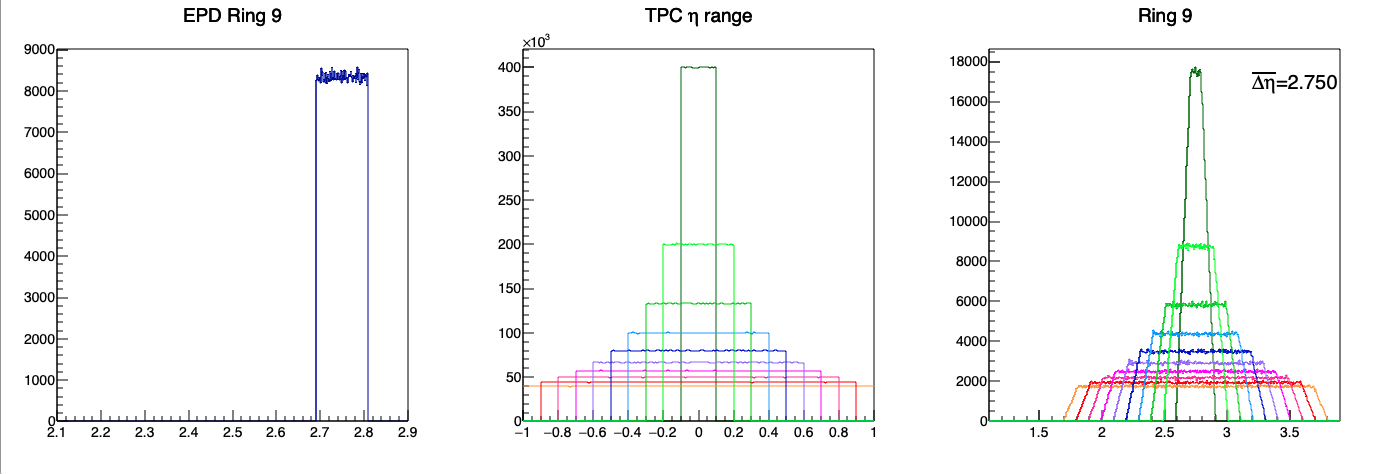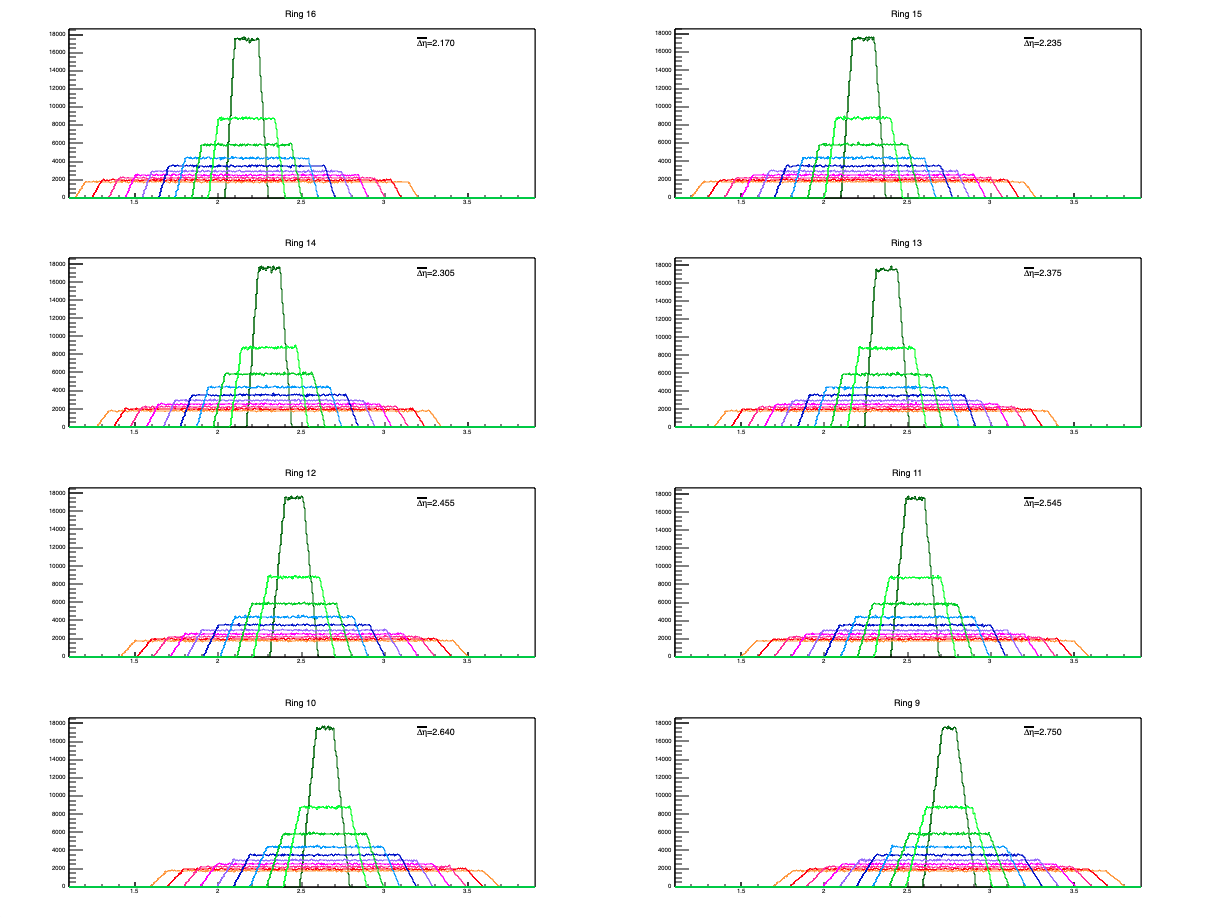Non-flow in the v1(EPD) measurement

Here is a quick simulation on the \delta\eta distribution. The \eta distribution of a EPD ring is approximated by a uniform distribution between two eta edges, those two eta edges were determined by a straight line between the inner/outer radii of the EPD ring and the original point (0,0,0). TPC eta range is the eta range within which the tracks are used for calculating the event plane. The flow measurement is similar to measuring the two particle correlation where one particle is from the EPD and the other particle is from the TPC. So the third plot, i.e \delta \eta distribution represents the eta gaps between particle pairs. The assumption for the non-flow effect is that it will decrease as the eta gaps increase and it will eventually go away when the eta gaps are large enough.

For the rest of the EPD rings (ring 10~16), I will just show the delta eta distribution, the color legend for the TPC eta range can be read from the middle plot above.

It is obvious that even the TPC eta range is varied, the average delta eta stays the same. The assumption that narrower TPC eta range leads to smaller non-flow effect only holds when the non-flow effect disappears beyond \eta=EPD_eta_upper+0.1. Otherwise, we are not sure about how the non-flow effect will change with the TPC eta range. For example, if the non-flow effect won't disappear until eta gap=4, then all the particle pairs have non-flow effect in it. If the non-flow effect is a perfect linear function of delta eta, the two situations will have the same amount of non-flow effect! Of course, in reality it wouldn't be a linear function, it will be some complicated form that we don't know. Therefore, its hard to tell which case has more non-flow effect in it.
It might help to explain some weird trend for v1 vs. delta eta at big delta eta for more outer rings (smaller eta, closer to TPC).
Maybe I still need to look at UrQMD, because I can vary TPC eta range like this: [-1.0,-0.9],[-0.9,-0.8],[-0.8,-0.7]....[0.9,1.0] and look at the v1 of same sign particles(particles from EPD and TPC have the same signs) and v1 of opposite sign particles (particles from EPD and TPC have opposite signs). Yes, there will be momentum conservation effect, but v1(same) and v1(oppo) should still be the same. But if there is non-flow effect (other from the conservation of momentum, but from conservation of charge), v1(same) and v1(oppo) will be different. When the eta gap is big enough to exclude the non flow from the conservation of charge, v1(same) and v1(oppo) will be the same.
- lxy1122's blog
- Login or register to post comments
